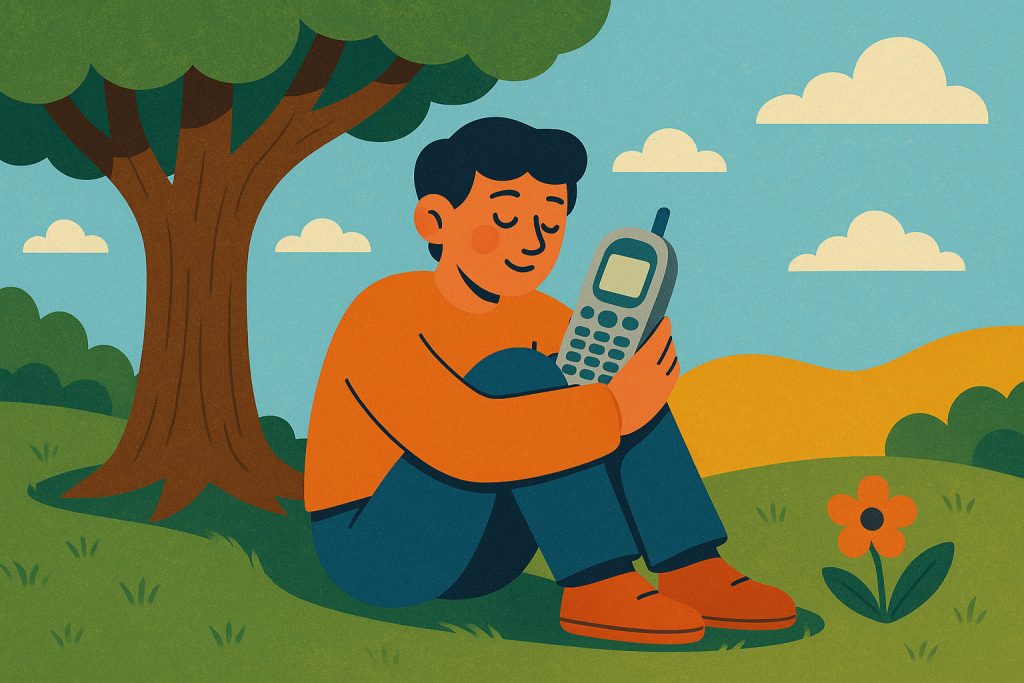In a noisy world, embracing slower tech means using devices and software more intentionally, allowing deeper focus and better mental balance. In this guide, we explain what slower tech is, why it’s a hot trend, and how to integrate it for real benefits.

What Is “Slower Tech”? {#what-is-slower-tech}
Slower tech refers to adopting technology that supports calm, intentional living—like dumb phones, minimalist interfaces, calm notifications, or digital sabbaths. It’s not rejecting tech, but resisting compulsive use, aiming instead for purposeful engagement.
This mirrors the broader “slow tech” and digital minimalism movements where slower tech becomes a tool for balance and quality of life.
Why Slower Tech Is Trending Now
- Mental health concerns:
With anxiety and burnout on the rise, younger generations are rebelling against endless notifications. According to Counterpoint Research, many Gen Z and millennials are choosing “dumb phones” to manage digital overload. - Cultural shift toward mindful living:
Slow-living ethics have seeped into tech habits—now we’re valuing intentionality over speed. Tech is still helpful but must support values, not distract from them. - Design innovation:
Concepts like calm tech—technology designed to stay in the periphery—are becoming mainstream. The Calm Tech Institute even introduced a certification standard in 2024.
The Benefits of Embracing Slower Tech
1. Improved Mental Clarity and Focus
- Cutting distractions improves deep work. A 2019 University of British Columbia study found less screen time led to lower stress and better concentration.
- Users report calmer mornings, better focus, and reduced decision fatigue.
2. Better Sleep and Reduced Stress
- Constant blue light and notifications disrupt rest; digital sabbaths enhance sleep quality.
- Digital minimalism frameworks show turning off non-urgent alerts improves relaxation and emotional health.
3. Deeper Relationships and Presence
- Being present strengthens bonds. Family tech curfews and mindful screen use improve real-world connections.
4. Increased Creativity
- Slower tech encourages analog hobbies—journaling, walking, crafting—leading to spark creativity and wellbeing.
- Digital minimalists report more time for reflection and analog play.
How to Adopt Slower Tech: A Practical Guide
1. Declutter Your Digital Life
- Remove non-essential apps.
- Disable non‑critical notifications.
Example: Follow the “Slow Tech Manifesto”—check email twice daily, silence most alerts, and ask “Does this enrich my life?”
2. Schedule Device-Free Periods
- Begin with tech-free meals or post‑8 pm screen cuts.
- Consider a weekly “tech sabbath” as suggested by digital minimalists.
3. Try Simple Devices
- Switch to a dumb phone for essential calls and SMS, eliminating app distractions. Studies show it enhances focus and wellbeing.
Step 4: Use Calm Tech Where Possible
- Adopt ambient, non-intrusive devices like reMarkable tablets or smart home systems that work in the background.
- Embed peripheral awareness tech to aid rather than disrupt.
5. Prioritize Analog Activities
- Replace screen time with reading, journaling, walking, or socializing.
- Reflect weekly: has slower tech improved focus, relationships, or mood?
Common Concerns & Misconceptions
| Concern | Response |
|---|---|
| Is it anti–tech/regressive? | No—it’s about control, not rejection. You still use tech, but on your terms. |
| Won’t I miss updates or work emails? | Set specific check-in times. You stay informed without constant distraction. |
| Is it only for digital minimalists? | Not at all. Slower tech helps anyone—from busy parents to professionals—gain clarity. |
| Will I lose productivity? | The opposite happens: fewer interruptions = better work and more creativity. |
Real-World Examples of Slower Tech
- Families: A tech curfew after dinner improves conversation and bonding.
- Workplaces: Some companies design calm tech zones and promote email-free days.
- Personal: Users switching to reMarkable devices or dumb phones report reduced stress and more intentional tech use.
What to Expect After Embracing Slower Tech
- Initial friction—discomfort from silent phones or empty apps.
- Rebalancing—gradual, intentional habits form.
- Noticeable improvements—more present time, better sleep, deeper thinking.
- Long-term gains—new routines that support wellbeing and deeper purpose.
Summary
Embracing slower tech isn’t nostalgia. It’s a timely response to digital overload—supported by trends, research, and design philosophies. When used intentionally, slower tech leads to greater mental clarity, stronger relationships, and a more creative brain.
Take the first step today: disable non-essential notifications, set screen curfews, or trial a dumb phone. Don’t wait—your attention, presence, and mental health are worth it.
References
Economic Times (2025) Get smart by going back to dumb phone. Available at: https://economictimes.indiatimes.com (Accessed: 19 June 2025).
Calm Tech Institute (2025) Calm technology. Available at: https://en.wikipedia.org/wiki/Calm_technology (Accessed: 19 June 2025).
StartMyWellness (2025) How Digital Minimalism Can Improve Your Mental Clarity and Well‑Being. Available at: https://startmywellness.com (Accessed: 19 June 2025).






